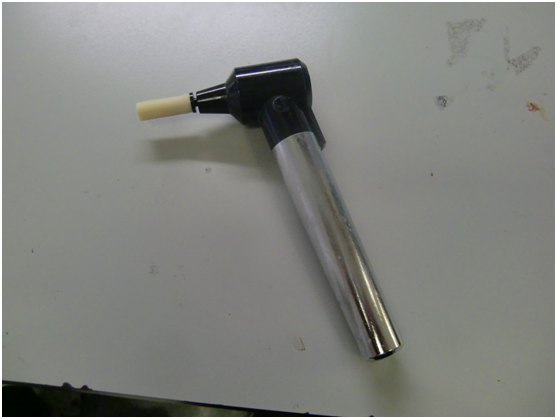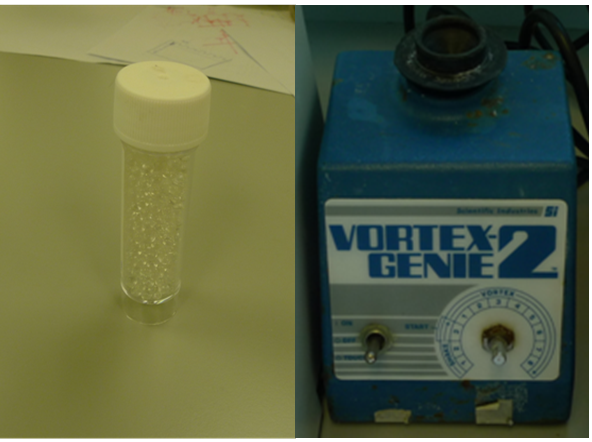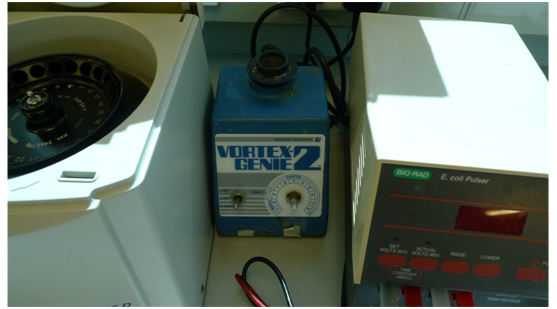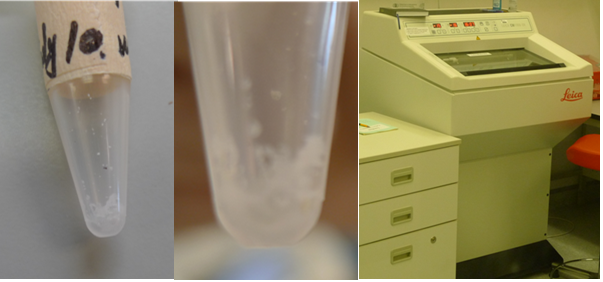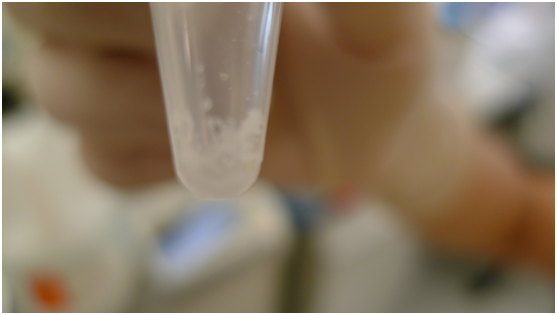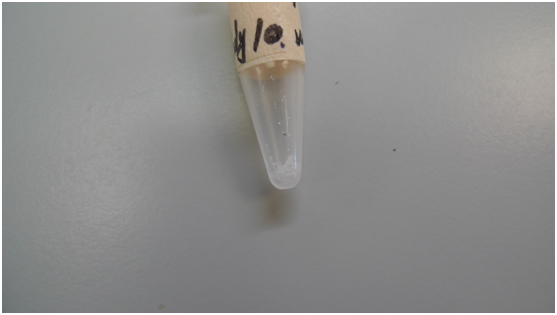Team:HKU-HKBU/Motor Preliminary Trials
From 2009.igem.org
| Line 9: | Line 9: | ||
Results: The membrane could not be broken into small pieces. | Results: The membrane could not be broken into small pieces. | ||
| - | [[Image:HKU-HKBU_motor_results_1.png |thumb]] | + | [[Image:HKU-HKBU_motor_results_1.png | none |thumb]] |
===Step 2=== | ===Step 2=== | ||
| Line 15: | Line 15: | ||
Results: The membrane remained intact. | Results: The membrane remained intact. | ||
| - | [[Image:HKU-HKBU_motor_results_2.png |thumb]] | + | [[Image:HKU-HKBU_motor_results_2.png | none|thumb]] |
| - | [[Image:HKU-HKBU_motor_results_3.png |thumb]] | + | [[Image:HKU-HKBU_motor_results_3.png | none |thumb]] |
===Step 3=== | ===Step 3=== | ||
| Line 26: | Line 26: | ||
The Immobolin-P membrane was first biotinylated and cut into very small pieces by human hands. Then, the membrane fragments were put into a mould made with aluminium foil and fixed into it with the help of glue. The mould along with the membrane fragment were cut with a Leica-crytomicrotome into further smaller pieces the size of 100umx60umx100um. | The Immobolin-P membrane was first biotinylated and cut into very small pieces by human hands. Then, the membrane fragments were put into a mould made with aluminium foil and fixed into it with the help of glue. The mould along with the membrane fragment were cut with a Leica-crytomicrotome into further smaller pieces the size of 100umx60umx100um. | ||
| - | [[Image:HKU-HKBU_motor_results_4.png |thumb]] | + | [[Image:HKU-HKBU_motor_results_4.png | none|thumb]] |
| - | [[Image:HKU-HKBU_motor_results_5.png |thumb]] | + | [[Image:HKU-HKBU_motor_results_5.png | none |thumb]] |
| - | [[Image:HKU-HKBU_motor_results_6.png |thumb]] | + | [[Image:HKU-HKBU_motor_results_6.png | none|thumb]] |
===Step 5=== | ===Step 5=== | ||
Revision as of 20:07, 17 October 2009
Contents |
Membrane Production
Step 1
The Immobolin-P membrane was first made wet and consequently homogenized with a mini-homogenizer.
Results: The membrane could not be broken into small pieces.
Step 2
The Immobolin-P membrane was first moistened, then it was put into a 10ml centrifugation tube. The tube was then totally filled with glass beads, and undergo vortexing subsequently.
Results: The membrane remained intact.
Step 3
The Immobolin-P membrane was moistened and liquefied nitrogen was poured onto it. The membrane was broken into pieces by human hands.
Results: The membrane remained intact.
Step 4
The Immobolin-P membrane was first biotinylated and cut into very small pieces by human hands. Then, the membrane fragments were put into a mould made with aluminium foil and fixed into it with the help of glue. The mould along with the membrane fragment were cut with a Leica-crytomicrotome into further smaller pieces the size of 100umx60umx100um.
Step 5
Some elemental silicon fragments were put inside a 1-ml eppendorf tube. The protein-biotin complex and some concentrated HCL were then added into the same tube. The tube was put inside a water bath for 2 hours. The silicon fragments were made dry by rinsing with PBS and followed by air drying. Then, some streptavidin containing beads were added onto the fragments. The fragments were observed under a microscope.
Results: No beads were bound to the silicon fragments.
Step 6
The silicon fragments were silanized by soaking them for 2 h in a solution of aminopropyl triethoxyl silane (3% aminopropyl triethoxyl silane, 2% acetic acid, 5% water, 90% ethanol), then rinsed with ethanol, and dried with a PCR machine for 5 mins. The amino-coated rotors (Fig. 2Bh) were then reacted with 1 mM succinimidyl-6-(biotinamido)-6-hexana- mido hexanoate (EZ-Link NHS-LC-LC-biotin; Pierce, Rock- ford, IL) dissolved in 40 mM phosphate buffer (pH 8.0) for 1 h at 37°C. Then strepatavidin beads were allowed to bind onto it and the fragments were observed under a microscope.
 "
"

